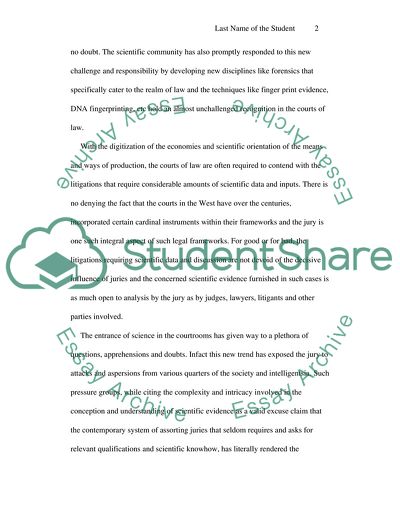Cite this document
(What Problems Does the Jury Face When Science Enters the Courtroom Coursework, n.d.)
What Problems Does the Jury Face When Science Enters the Courtroom Coursework. Retrieved from https://studentshare.org/science/1718263-what-problems-does-the-jury-face-when-science-enters-the-courtroom
What Problems Does the Jury Face When Science Enters the Courtroom Coursework. Retrieved from https://studentshare.org/science/1718263-what-problems-does-the-jury-face-when-science-enters-the-courtroom
(What Problems Does the Jury Face When Science Enters the Courtroom Coursework)
What Problems Does the Jury Face When Science Enters the Courtroom Coursework. https://studentshare.org/science/1718263-what-problems-does-the-jury-face-when-science-enters-the-courtroom.
What Problems Does the Jury Face When Science Enters the Courtroom Coursework. https://studentshare.org/science/1718263-what-problems-does-the-jury-face-when-science-enters-the-courtroom.
“What Problems Does the Jury Face When Science Enters the Courtroom Coursework”. https://studentshare.org/science/1718263-what-problems-does-the-jury-face-when-science-enters-the-courtroom.


